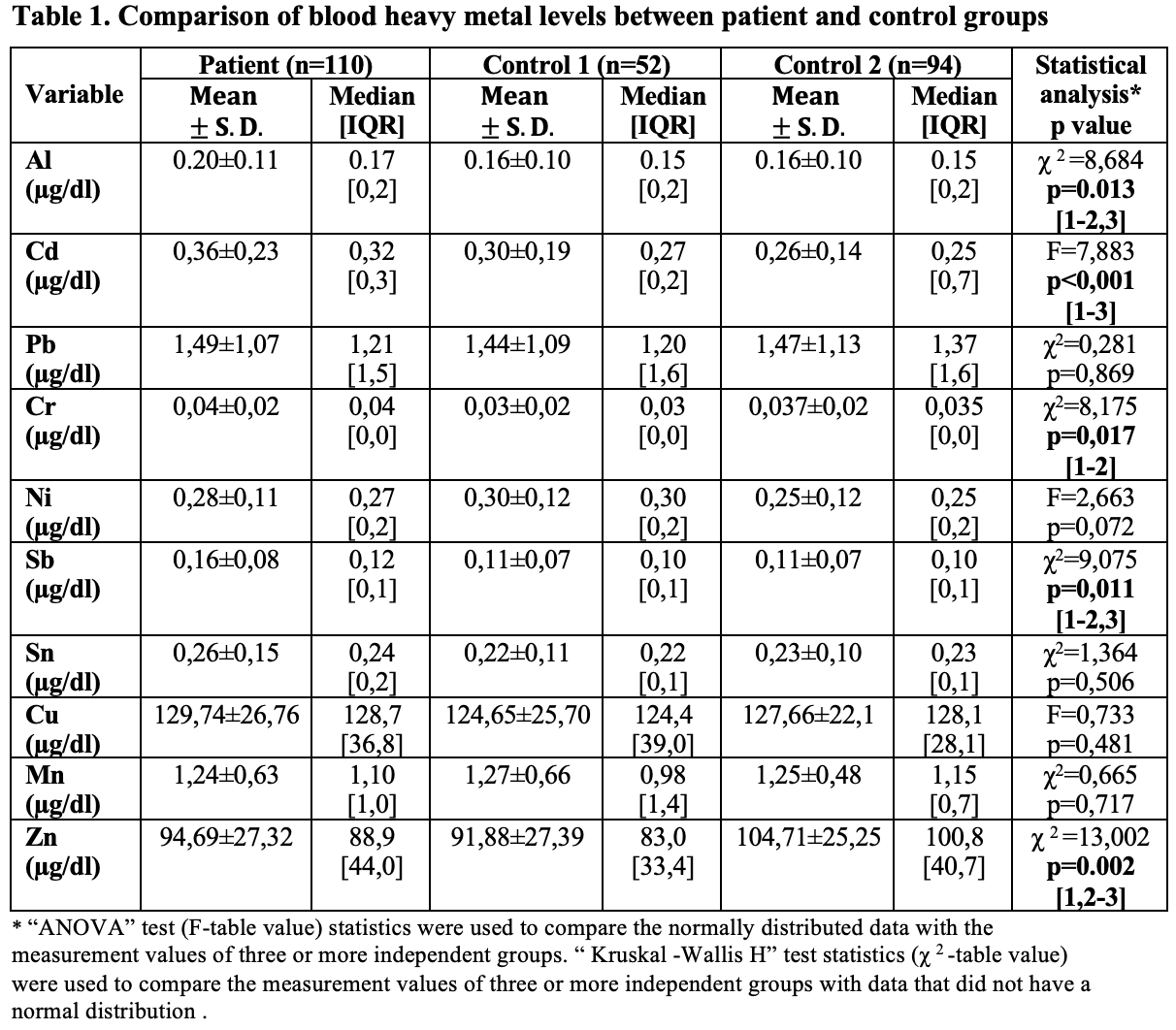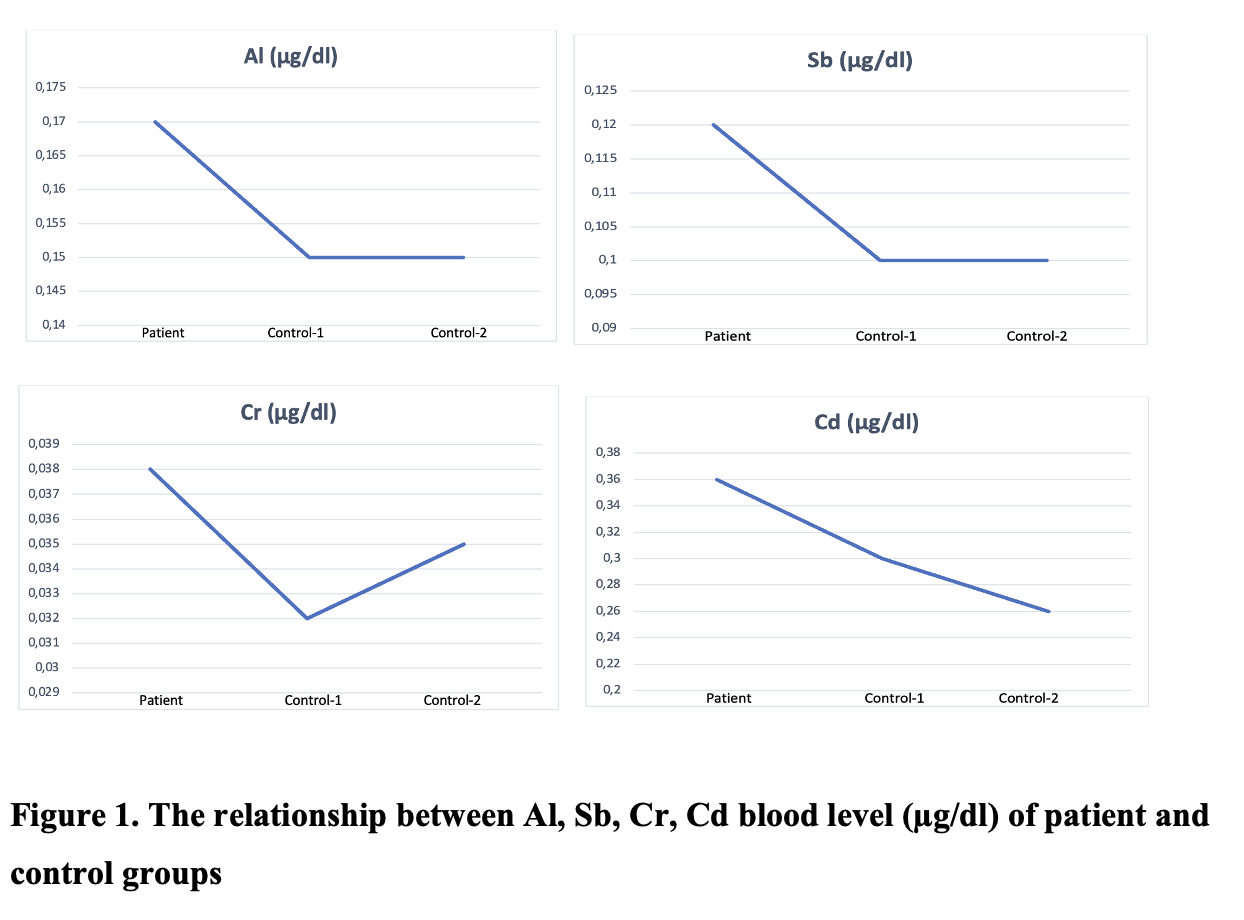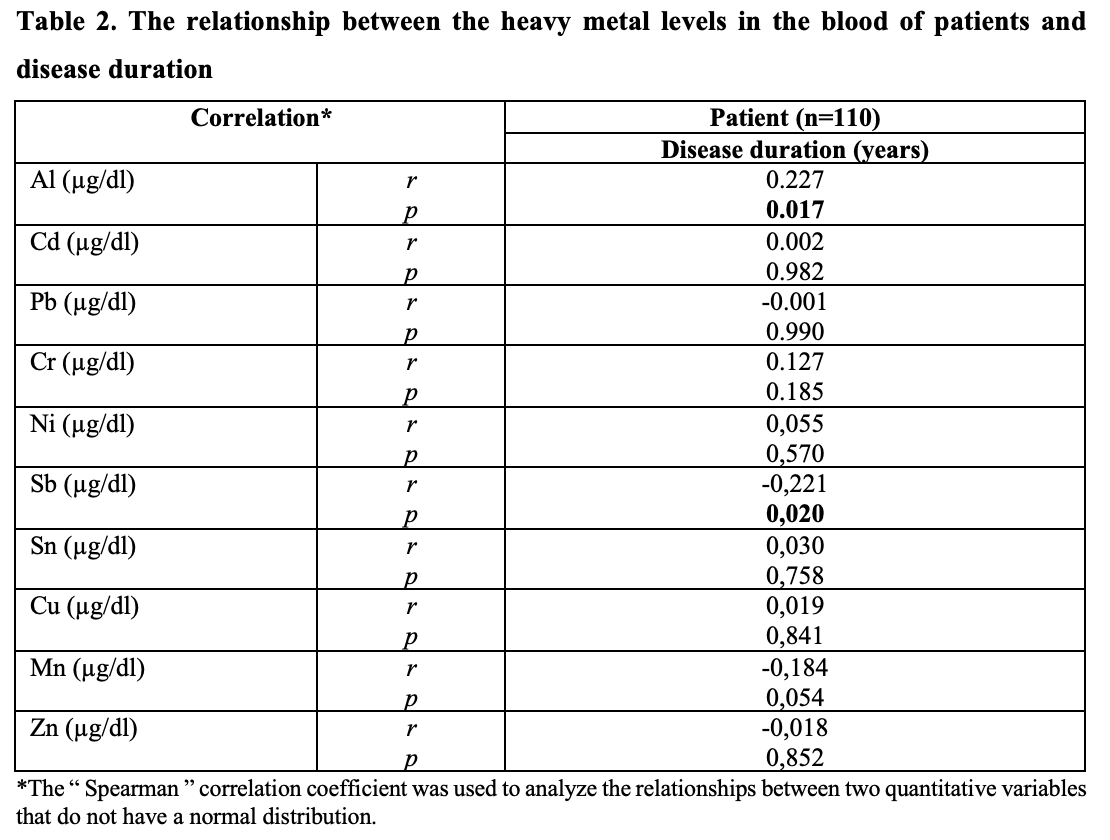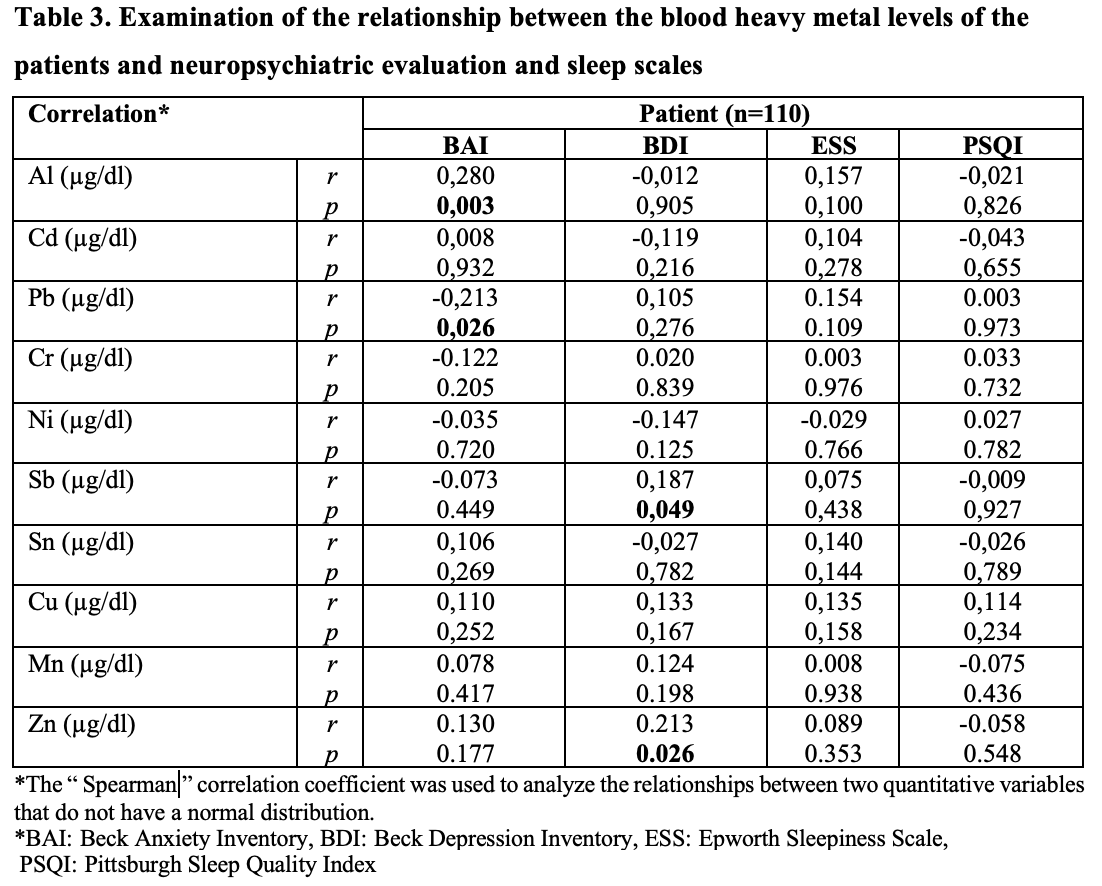Category: Tremor
Objective: In this study, we aimed to investigate the relationship between tremor characteristics, neuropsychiatric status and blood heavy metal levels of essential tremor (ET) patients.
Background: ET is one the most common movement disorders affecting 1% of the population.Both genetic and environmental factors may trigger the pathophysiology that eventually cause ET.There are still difficulties in identifying the underlying etiology resulting patients’ variable responses to treatment.The accumulation of heavy metals in the basal ganglia is known to cause various movement disorders.Blood Pb levels in ET patients has been studied.However, there is no clear data in the literature evaluating the blood levels of other heavy metals (Al, Cr, Mn, Ni, Cu, Zn, Cd, Sb, Sn) in ET patients.
Method: A total of 110 ET patients and 146 healthy controls were included.All patients underwent a detailed neurological examination and Basic Tremor Evaluation Scale, Fahn-Tolosa-Marin Tremor Scales were recorded for the patient group.Beck Depression and Anxiety Inventory, Epworth Sleepiness Scale and Pittsburgh Sleep Quality Index were applied to all participants. Peripheral blood samples were collected from all participants and heavy metal levels were examined and analyzed.
Results: A total of 110 patients and 146 healthy controls were included in the study. Patient average of age 52.10±17.00; control group was 46.00±15.85 founded.Al, Cd, Cr and Sb blood levels were found to be statistically significantly higher in ET patients compared to the control group (for Al; χ 2 =8,684; p=0.013, for Cd; F=7,883, p<0.001, for Cr; χ 2 =8.175; p=0.017, for Sb; χ 2 =9.075; p=0.011) The duration of the disease was found to be positively correlated with Al blood levels (r=0,227, p=0,017). A positive correlation was found between Al blood level and BAI score(r=0,280, p=0,003) and between Sb, Zn blood levels and BDI scores(for Sb; r=0,187 p=0,049, for Zn; r=0,213, p=0,026) in the patient group.
Conclusion: Our results revealed that ET is associated with elevated blood levels of Al, Cd, Cr and Sb. With a better understanding of the underlying mechanisms of the disease, investigating the etiological role of particular heavy metals will enable the establishment of novel therapeutic approaches to prevent or cure ET.
References: 1. Louis ED. Clinical practice. Essential tremor. N Engl J Med. 2001;345(12). https://doi.org/10.1056/nejmcp010928
2. Deng H, Le WD, Guo Y, Huang MS, Xie WJ, Jankovic J. Extended study of A265G variant of HS1BP3 in essential tremor and Parkinson disease. Neurology. 2005;65(4) https://doi.org/10.1212/01.wnl.0000173033.32535.23
3. Louis ED, Applegate LM, Factor-Litvak P, Parides MK, Andrews L. Essential tremor: Occupational exposures to manganese and organic solvents. Neurology. 2004;63(11). https://doi.org/10.1212/01.wnl.0000145600.91491.f2
4. Chen P, Miah MR, Aschner M. Metals and Neurodegeneration. Vol. 5, F1000Research. 2016. https://doi.org/10.12688/f1000research.7431.1
5. Louis ED et al. Association between essential tremor and blood lead concentration. Environ Health Perspect. 2003 Nov;111(14):1707-11. https://doi.org/10.1289/ehp.6404
6. Dogu O, Louis ED, Tamer L, Unal O, Yilmaz A, Kaleagasi H. Elevated Blood Lead Concentrations in Essential Tremor: A Case – Control Study in Mersin, Turkey. 2007;(11):1564–8 https://doi.org/10.1289%2Fehp.10352
To cite this abstract in AMA style:
I. Korucu, A. Aksoy Gündoğdu, N. Bahtiyar. Evaluation of blood heavy metal concentrations in patients with essential tremor [abstract]. Mov Disord. 2023; 38 (suppl 1). https://www.mdsabstracts.org/abstract/evaluation-of-blood-heavy-metal-concentrations-in-patients-with-essential-tremor/. Accessed December 23, 2025.« Back to 2023 International Congress
MDS Abstracts - https://www.mdsabstracts.org/abstract/evaluation-of-blood-heavy-metal-concentrations-in-patients-with-essential-tremor/




